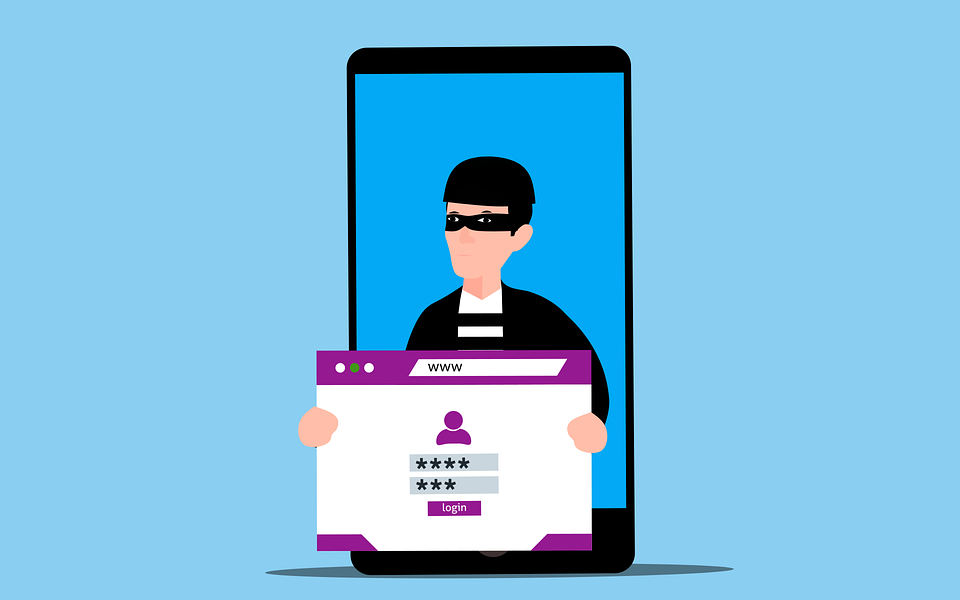Malware vs Ransomware
Cyber threats are evolving at a staggering rate. In 2024 alone, over 60 million new malware strains were discovered. While malware and ransomware are often mentioned together, they are not the same—and knowing the difference can help protect your personal and business data.
Here at ParJenn Technologies, we believe that educating yourself on digital threats is the first step to defending against them. In this guide, we’ll break down the differences between malware and ransomware, how they work, how they get in, and how you can protect yourself.
What Is Malware? Malware vs Ransomware
Malware, short for malicious software, is a general term for any program designed to harm, steal, or exploit your data or systems. It comes in many forms, including:
- Viruses: Spread from device to device by infecting files.
- Worms: Replicate themselves and spread without user input.
- Trojans: Disguise themselves as legitimate programs.
- Spyware: Secretly monitors your activity and collects data.
If your device is infected with malware, you might experience:
❌ Slower system performance
❌ Deleted or corrupted files
❌ Stolen passwords or financial data
❌ Unauthorized remote access
🔍 Learn more about malware types from Kaspersky.
What Is Ransomware? Malware vs Ransomware
Ransomware is a type of malware that encrypts your files—or even your entire system—and demands payment to restore access. It’s digital extortion, and it’s on the rise.
The typical ransomware attack looks like this: Malware vs Ransomware
- A malicious file is downloaded or clicked.
- The ransomware silently encrypts your data.
- A ransom note appears, demanding payment in exchange for the decryption key.
- Victims may or may not receive the key even if they pay.
According to Sophos, the average ransom in 2024 reached $2.73 million, a significant increase from the previous year.
There are two major types: Malware vs Ransomware
- Locker ransomware: Locks down your entire device.
- Crypto ransomware: Encrypts only your files.
📈 View the latest ransomware trends from Sophos.
Malware vs. Ransomware: Key Differences
While both malware and ransomware are dangerous, their intentions and methods are different:
| Malware | Ransomware |
|---|---|
| Designed to harm, spy, or steal data | Designed to extort money |
| Works silently in the background | Alerts the user with ransom demands |
| May delete or transmit data | Encrypts data and locks access |
| Can be harder to detect | Announces itself immediately |
Understanding these differences helps you respond effectively in the event of an infection.
How Do Malware and Ransomware Get In? Malware vs Ransomware
These threats share common entry points:
- 📎 Email attachments with malicious payloads
- 🌐 Fake websites or ads that trick users into downloading malware
- 🔌 Infected USB drives
- ⚠️ Outdated software with unpatched vulnerabilities
In 2025, AI-generated malware is expected to account for 20% of all new threats, and fileless malware is growing by 65%, making prevention more critical than ever.
Signs You Might Be Infected Malware vs Ransomware
Being able to recognize the early signs of an attack can make all the difference.
Malware symptoms:
- Your computer runs unusually slow
- Strange pop-ups appear
- Programs crash unexpectedly
Ransomware symptoms:
- You can’t open your files
- A ransom message appears on your screen
- Your background changes to a warning or threat
⚠️ Don’t ignore these signs—immediate action can limit the damage.
How to Protect Yourself Malware vs Ransomware
Good cybersecurity habits are your best defense. Here’s how to stay protected:
General Tips for Malware and Ransomware Protection:
- 🔄 Keep all software up to date
- 🔐 Use strong, unique passwords
- 🚫 Don’t click unknown links or attachments
- 💾 Backup your files regularly (on- and offline)
Specific tips for malware:
- Install and regularly update antivirus/anti-malware software
- Only download software from trusted sources
Specific tips for ransomware:
- Use anti-ransomware tools
- Store backups on external or offline drives
- Train employees to spot phishing attempts
🔐 Check out free ransomware protection tools from No More Ransom.
What to Do If You’re Infected
If you suspect an attack, act fast.
If it’s malware:
- Disconnect from the internet
- Run a full system antivirus scan
- Remove infected files
- Change your passwords
If it’s ransomware: Malware vs Ransomware
- Disconnect from networks and external devices
- Do not pay the ransom
- Report the incident to authorities (e.g., FBI, local police)
- Restore from a secure backup
📣 Report ransomware attacks to the FBI’s IC3 portal: www.ic3.gov
Why Understanding the Difference Matters
Knowing whether you’re facing malware or ransomware affects how you respond:
- It helps you take faster, more accurate action
- It prevents further spread or loss Malware vs. ransomware
- It empowers you to implement stronger defenses in the future
Cyber threats are complex, but education is your first line of defense.
Let’s Keep Your Business Safe
ParJenn Technologies is here to help small businesses in Jefferson, Harris, Galveston, and Chambers counties fight back against malware and ransomware threats.
We offer tools, training, and support to help you defend your digital space before disaster strikes.
🔗 Schedule a CyberShield Consultation Now
Malware vs Ransomware
Cyber threats are evolving at a staggering rate. In 2024 alone, over 60 million new malware strains were discovered. While malware and ransomware are often mentioned together, they are not the same—and knowing the difference can help protect your personal and business data.
Here at ParJenn Technologies, we believe that educating yourself on digital threats is the first step to defending against them. In this guide, we’ll break down the differences between malware and ransomware, how they work, how they get in, and how you can protect yourself.
What Is Malware? Malware vs Ransomware
Malware, short for malicious software, is a general term for any program designed to harm, steal, or exploit your data or systems. It comes in many forms, including:
- Viruses: Spread from device to device by infecting files.
- Worms: Replicate themselves and spread without user input.
- Trojans: Disguise themselves as legitimate programs.
- Spyware: Secretly monitors your activity and collects data.
If your device is infected with malware, you might experience:
❌ Slower system performance
❌ Deleted or corrupted files
❌ Stolen passwords or financial data
❌ Unauthorized remote access
🔍 Learn more about malware types from Kaspersky.
What Is Ransomware? Malware vs Ransomware
Ransomware is a type of malware that encrypts your files—or even your entire system—and demands payment to restore access. It’s digital extortion, and it’s on the rise.
The typical ransomware attack looks like this: Malware vs Ransomware
- A malicious file is downloaded or clicked.
- The ransomware silently encrypts your data.
- A ransom note appears, demanding payment in exchange for the decryption key.
- Victims may or may not receive the key even if they pay.
According to Sophos, the average ransom in 2024 reached $2.73 million, a significant increase from the previous year.
There are two major types: Malware vs Ransomware
- Locker ransomware: Locks down your entire device.
- Crypto ransomware: Encrypts only your files.
📈 View the latest ransomware trends from Sophos.
Malware vs. Ransomware: Key Differences
While both malware and ransomware are dangerous, their intentions and methods are different:
| Malware | Ransomware |
|---|---|
| Designed to harm, spy, or steal data | Designed to extort money |
| Works silently in the background | Alerts the user with ransom demands |
| May delete or transmit data | Encrypts data and locks access |
| Can be harder to detect | Announces itself immediately |
Understanding these differences helps you respond effectively in the event of an infection.
How Do Malware and Ransomware Get In? Malware vs Ransomware
These threats share common entry points:
- 📎 Email attachments with malicious payloads
- 🌐 Fake websites or ads that trick users into downloading malware
- 🔌 Infected USB drives
- ⚠️ Outdated software with unpatched vulnerabilities
In 2025, AI-generated malware is expected to account for 20% of all new threats, and fileless malware is growing by 65%, making prevention more critical than ever.
Signs You Might Be Infected Malware vs Ransomware
Being able to recognize the early signs of an attack can make all the difference.
Malware symptoms:
- Your computer runs unusually slow
- Strange pop-ups appear
- Programs crash unexpectedly
Ransomware symptoms:
- You can’t open your files
- A ransom message appears on your screen
- Your background changes to a warning or threat
⚠️ Don’t ignore these signs—immediate action can limit the damage.
How to Protect Yourself Malware vs Ransomware
Good cybersecurity habits are your best defense. Here’s how to stay protected:
General Tips for Malware and Ransomware Protection:
- 🔄 Keep all software up to date
- 🔐 Use strong, unique passwords
- 🚫 Don’t click unknown links or attachments
- 💾 Backup your files regularly (on- and offline)
Specific tips for malware:
- Install and regularly update antivirus/anti-malware software
- Only download software from trusted sources
Specific tips for ransomware:
- Use anti-ransomware tools
- Store backups on external or offline drives
- Train employees to spot phishing attempts
🔐 Check out free ransomware protection tools from No More Ransom.
What to Do If You’re Infected
If you suspect an attack, act fast.
If it’s malware:
- Disconnect from the internet
- Run a full system antivirus scan
- Remove infected files
- Change your passwords
If it’s ransomware: Malware vs Ransomware
- Disconnect from networks and external devices
- Do not pay the ransom
- Report the incident to authorities (e.g., FBI, local police)
- Restore from a secure backup
📣 Report ransomware attacks to the FBI’s IC3 portal: www.ic3.gov
Why Understanding the Difference Matters
Knowing whether you’re facing malware or ransomware affects how you respond:
- It helps you take faster, more accurate action
- It prevents further spread or loss Malware vs. ransomware
- It empowers you to implement stronger defenses in the future
Cyber threats are complex, but education is your first line of defense.
Let’s Keep Your Business Safe
ParJenn Technologies is here to help small businesses in Jefferson, Harris, Galveston, and Chambers counties fight back against malware and ransomware threats.
We offer tools, training, and support to help you defend your digital space before disaster strikes.





